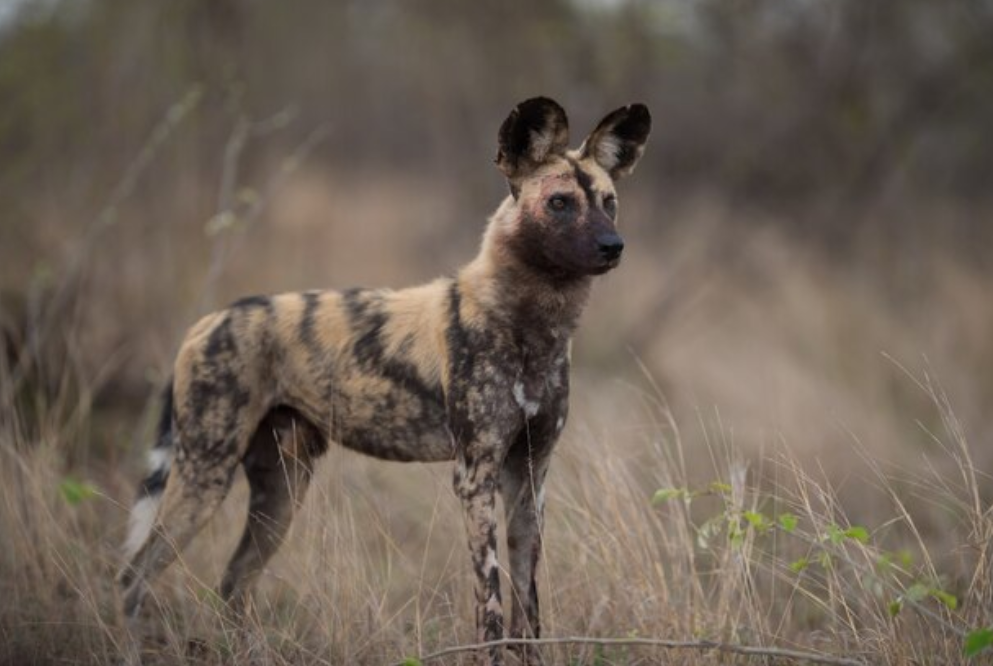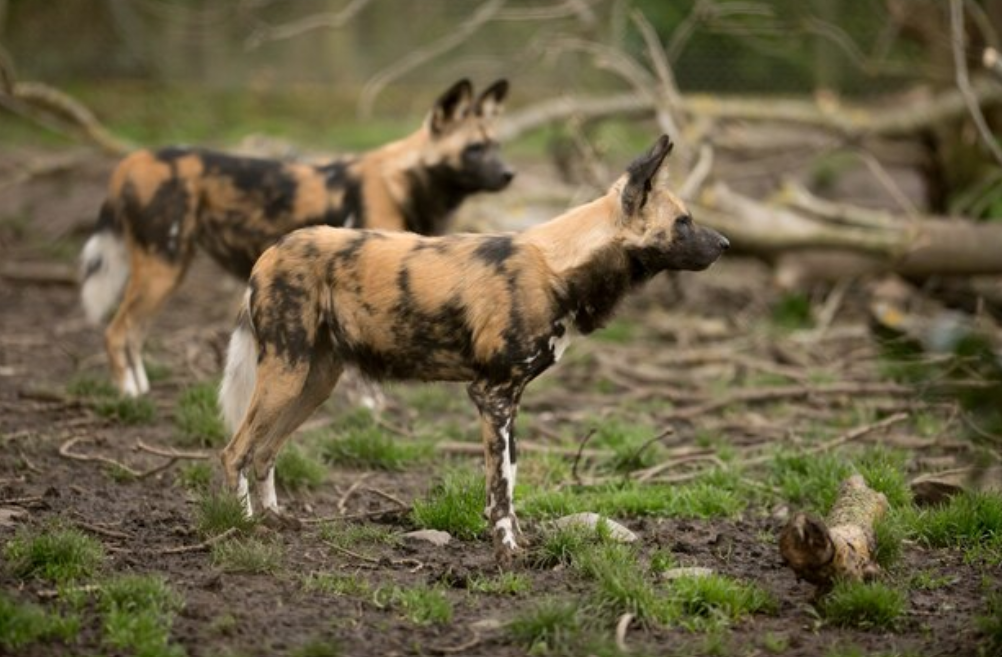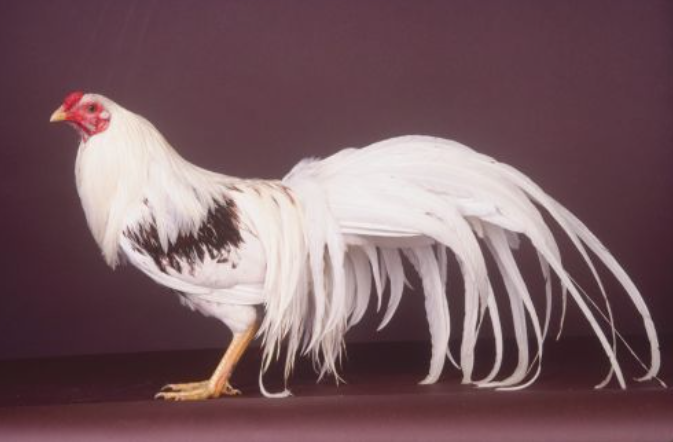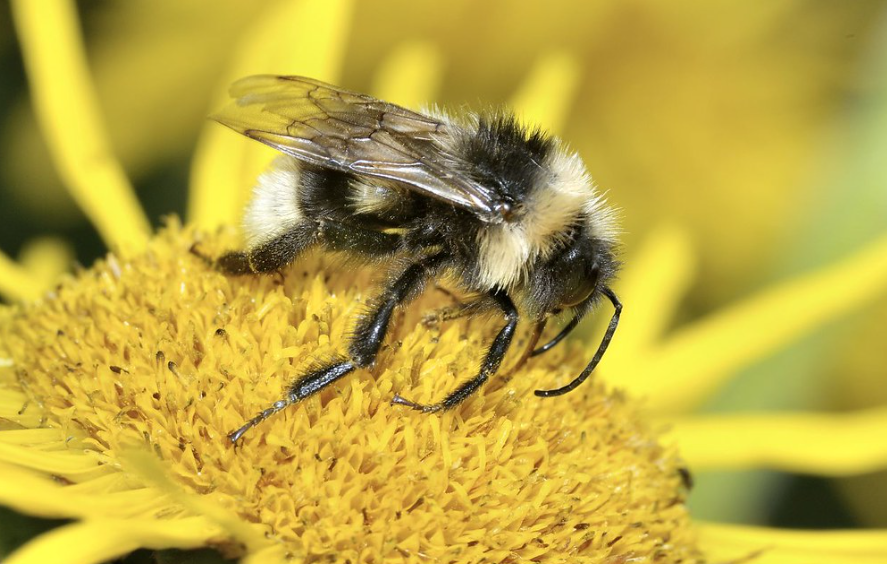
Quick Top 10 Facts about African Wild Dog
| SCIENTIFIC NAME | Lycaon pictus |
| CLASSIFICATION | KINGDOM: Animalia PHYLUM: Chordata CLASS: Mammalia ORDER: Carnivora FAMILY: Canidae GENUS: Lycaon SPECIES: L. pictus |
| SIZE | Height: 24–30 inches (60–75 cm); Weight: 40–80 lbs (18–36 kg) |
| HABITAT | Savannas, grasslands, and lightly wooded areas across sub-Saharan Africa |
| DIET | Carnivorous; feeds on antelope, wildebeest calves, warthogs, birds, and rodents |
| SPECIES | African Wild Dog, also known as the African painted dog or Cape hunting dog |
| COUNTRY | Found in several African countries including Botswana, Zimbabwe, Tanzania, and South Africa |
| GESTATION PERIOD | About 70 days |
| LIFE SPAN | 10–12 years in the wild |
| CONSERVATION STATUS | Endangered; populations are declining due to habitat loss, human conflict, and disease |
Amazing Facts About African Wild Dogs
1. Unique coat patterns
Each African Wild Dog has a distinct coat of mottled black, white, brown, and yellow fur—no two are alike!
2. Highly social animals
They live and hunt in packs with a complex social hierarchy and strong bonds among members.
3. Exceptional hunters
African Wild Dogs are among the most successful predators, with hunting success rates as high as 80%.
4. Cooperative care
All pack members help care for and feed the pups, not just the mother.
5. Communicate with chirps
They use vocalizations like chirps, whines, and twittering sounds to coordinate during hunts and maintain group cohesion.
6. Built for endurance
These dogs can run up to 44 mph (70 km/h) and chase prey over long distances with incredible stamina.
7. Endangered and declining
Fewer than 7,000 African Wild Dogs remain in the wild, and they are considered endangered by the IUCN.
8. Threatened by disease
Diseases like rabies and canine distemper, often transmitted by domestic dogs, are major threats to wild populations.
9. Prefer large territories
They require expansive areas to roam and hunt, making habitat fragmentation a serious concern.
10. Rarely seen in zoos
Due to their complex social needs and space requirements, African Wild Dogs are not commonly kept in captivity.
Natural habitat and geographical distribution across Africa
African wild dogs, also called African painted dogs or Cape hunting dogs, are amazing species that live in the sub-Saharan areas of Africa. . With patches of black, white, and yellow hair, these gregarious creatures are distinguished by their unusual coat patterns.
Differences of African wild dog and other dogs
In contrast to most canids, African wild dogs have four front toes—one less than the majority of other canine species. They can run at astounding speeds of up to 44 miles per hour (70 kilometers per hour) because of this adaptation, which also makes their stride more effective. Their long legs and slim bodies provide them with endurance and agility, which makes them excellent hunters.
The importance of raising awareness about this fascinating animal
The African pack of wild dogs may have as many as thirty members. With a strong breeding couple at the front of the pack, these packs are very well organized. The alpha female is the main breeder, with the other pack members helping to raise the offspring. Their cooperative hunting activity, in which the pack works together to bring down prey, gives them a distinctive social structure. They can defeat bigger animals like antelopes with this tactic, which also improves their chances of success.
African wild dog as a unique and endangered species
Sadly, there are a lot of challenges African wild dogs are now experiencing, which has caused their number to fall. Some of the primary causes of their susceptibility are infections spread by domestic dogs, habitat degradation, and conflicts between humans and animals. For these amazing animals to remain safe and secure in the wild, conservation activities are essential. To preserve the African wild dog population, a number of groups and projects are trying to create protected areas, enforce anti-poaching laws, and increase public awareness.
Fascinating facts about African wild dogs
African wild dogs are amazing animals that live on the African savannah. They are sometimes referred to as African painted dogs or Cape hunting dogs. They are often misunderstood and undervalued because of their distinctive look and social behavior. We’ll look at some fascinating facts about African wild dogs below:
1. Physical appearance: Size, weight, and distinctive coat patterns
African wild dogs are distinguished by their vibrant fur patterns. Every dog has a different coat pattern that aids in distinguishing them from one another. They are great runners because of their long legs, slim bodies, and wide, rounded ears. They may reach a height of around 30 inches at the shoulder and weigh between 55 and 70 pounds on average.
2. The social structure of African wild dogs
Living in bands of up to thirty, African wild dogs are gregarious creatures. An alpha pair, often the dominant male and female, leads these packs. Their previous litter’s children make up the remainder of the group. They hunt and raise their children together because they have a strong sense of teamwork.
3. Diet and Hunting structures
African wild dogs are expert hunters who use their extraordinary endurance and speed to bring down their prey. They are renowned for using a cooperative hunting approach in which they pursue and exhaust their prey together as a team. They mostly eat medium-sized antelope, although they may sometimes kill bigger game like zebras and wildebeests.
4. Cooperative hunting techniques and communication methods
African wild canines may communicate with one another using a variety of vocalizations. During hunting, they communicate by making high-pitched noises that resemble birds chirping. They also have a peculiar sneezing ceremony in which they sneeze to welcome one another. The social ties that exist within the pack are strengthened by this action.
5. Endangered status and the importance of conservation
African wild dogs have exceptional adaptability and hunting abilities, yet they are still considered an endangered species. Because of illnesses spread by domestic dogs, habitat degradation, and conflict between humans and animals, their number has drastically decreased. To save these amazing creatures and guarantee their continued existence in the wild, conservation initiatives are being carried out.
6. Procreation and Raising Puppies
Typically, in a den, female African wild dogs give birth to litters of two to twenty puppies. The puppies are raised by the whole pack, with both males and females contributing to their care. Usually, the dominant female tends to the puppies while other pack members spit food into their mouths. The young are guaranteed both survival and well-being via this cooperative breeding arrangement.
7. Quickness and Energy
African wild canines are renowned for having extraordinary endurance and can run great distances while hunting. They can go at a constant rate for many miles at a time, reaching top speeds of 37 mph (60 km/h). Their ability to endure longer than their prey enhances their chances of successful hunting.

8. Distinctive Hunting Achievement Rate
With an almost 80% hunting success rate, African wild dogs have one of the greatest rates of success among all African predators. Their ability to cooperate and hunt together to follow their prey until it succumbs to weariness is the reason behind this. They have a higher success rate than hyenas and lions.
9. The Significance of Ecological
African wild dogs are essential to preserving environmental equilibrium. Because they are effective predators, they aid in the management of herbivore populations, minimizing habitat damage and overgrazing. Their existence in a region is a sign of a robust and varied ecology.
10. Importance of community involvement and education in conservation efforts
African wild dogs and their habitats are actively being protected by national parks and conservation groups. Community education initiatives, habitat restoration, and anti-poaching patrols are among the efforts. We can guarantee the survival of these amazing species for future generations by increasing awareness and putting conservation measures in place.
African wild dogs are amazing animals with distinctive social structures and hunting techniques. The preservation of their habitat is essential to preserving the natural equilibrium of African savannahs. We can help preserve both the animals and their habitats by learning about and enjoying these amazing creatures.
FAQ (Frequently Asked Questions) about African Wild Dog
Q: What is an African Wild Dog?
Ans: The African Wild Dog (Lycaon pictus), also known as the painted wolf or painted dog, is a highly social and endangered carnivorous mammal native to sub-Saharan Africa. It is known for its large, rounded ears, slender build, and unique patchwork coat of black, brown, yellow, and white fur.
Q: Where does the African Wild Dog live?
Ans: African Wild Dogs are found in parts of eastern and southern Africa, including countries like Botswana, Tanzania, Mozambique, and Zimbabwe. They prefer open plains, savannas, and lightly wooded areas where they can effectively hunt in packs.
Q: What does the African Wild Dog eat?
Ans: African Wild Dogs are carnivores and primarily hunt medium-sized ungulates such as impalas, gazelles, and wildebeest calves. They are skilled and cooperative hunters, using teamwork and stamina to pursue prey in long chases.
Q: How big does an African Wild Dog get?
Ans: African Wild Dogs typically weigh between 40 to 80 pounds (18 to 36 kg) and stand about 24 to 30 inches (60 to 75 cm) at the shoulder. Their long legs and lean bodies make them well-suited for endurance running.
Q: Are African Wild Dogs dangerous?
Ans: African Wild Dogs are not dangerous to humans. They are shy and avoid human contact. However, they are fierce predators within the animal kingdom and are highly efficient when hunting in packs.
Q: How do African Wild Dogs behave?
Ans: African Wild Dogs are extremely social animals that live in packs of up to 30 individuals. They have strong bonds and work together to care for pups and the injured. They communicate using vocalizations, body language, and scent marking.
Q: What does the African Wild Dog look like?
Ans: African Wild Dogs have a unique and colorful coat with blotches of black, brown, yellow, and white. Each dog has a distinct pattern. They have long legs, a bushy white-tipped tail, and large ears that help with hearing and thermoregulation.
Q: How long do African Wild Dogs live?
Ans: In the wild, African Wild Dogs live about 10 to 12 years. In captivity, with proper care, they can live slightly longer. However, their lifespan is often shortened in the wild due to threats from predators, disease, and human conflict.
Q: Can you keep an African Wild Dog as a pet?
Ans: No, African Wild Dogs are wild animals and cannot be domesticated or kept as pets. They require large territories, complex social structures, and specialized diets. It is also illegal to own them in most places due to their endangered status.
Q: Are African Wild Dogs endangered?
Ans: Yes, African Wild Dogs are listed as Endangered by the IUCN. Their populations are declining due to habitat fragmentation, human-wildlife conflict, and diseases like rabies and distemper. Conservation efforts are ongoing to protect their remaining habitats.
#AfricanWildDog, #PaintedWolf, #EndangeredSpecies, #WildlifeConservation, #SavannaPredator, #LycaonPictus, #NatureLovers, #PackHunters, #Carnivores, #AfricanWildlife
Our sources and references about African Wild Dog
1: Wikipedia – African Wild Dog
2: WWF – African Wild Dog
3: African Wildlife Foundation – African Wild Dog
4: National Geographic – African Wild Dog


